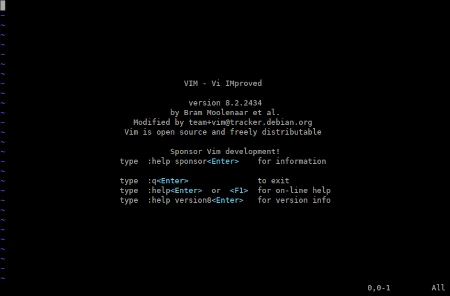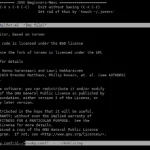Last Updated on: 10th December 2023, 12:05 pm
Web site: www.vim.org
Category: Office
Subcategory: Text Editors
Platform: Linux, UNIX, DOS, Windows, OS X, iOS, Android, Haiku, AmigaOS, MorphOS
License: Vim
Interface: CLI
First release: November 2, 1991
Vim – a highly configurable text editor built to make creating and changing any kind of text very efficient. It is included as “vi” with most UNIX systems and with Apple OS X. Vim is an advanced text editor that seeks to provide the power of the de-facto Unix editor ‘Vi’, with a more complete feature set. It’s useful whether you’re already using vi or using a different editor.
Vim is often called a “programmer’s editor,” and so useful for programming that many consider it an entire IDE. It’s not just for programmers, though. Vim is perfect for all kinds of text editing, from composing email to editing configuration files.
Despite what the above comic suggests, Vim can be configured to work in a very simple (Notepad-like) way, called evim or Easy Vim.
Features:
– persistent, multi-level undo tree
– extensive plugin system
– support for hundreds of programming languages and file formats
– powerful search and replace
– integrates with many tools
Vim isn’t an editor designed to hold its users’ hands. It is a tool, the use of which must be learned. Vim isn’t a word processor. Although it can display text with various forms of highlighting and formatting, it isn’t there to provide WYSIWYG editing of typeset documents. (It is great for editing TeX, though.)
Vim is charityware. Its license is GPL-compatible, so it’s distributed freely, but we ask that if you find it useful you make a donation to help children in Uganda through the ICCF.





